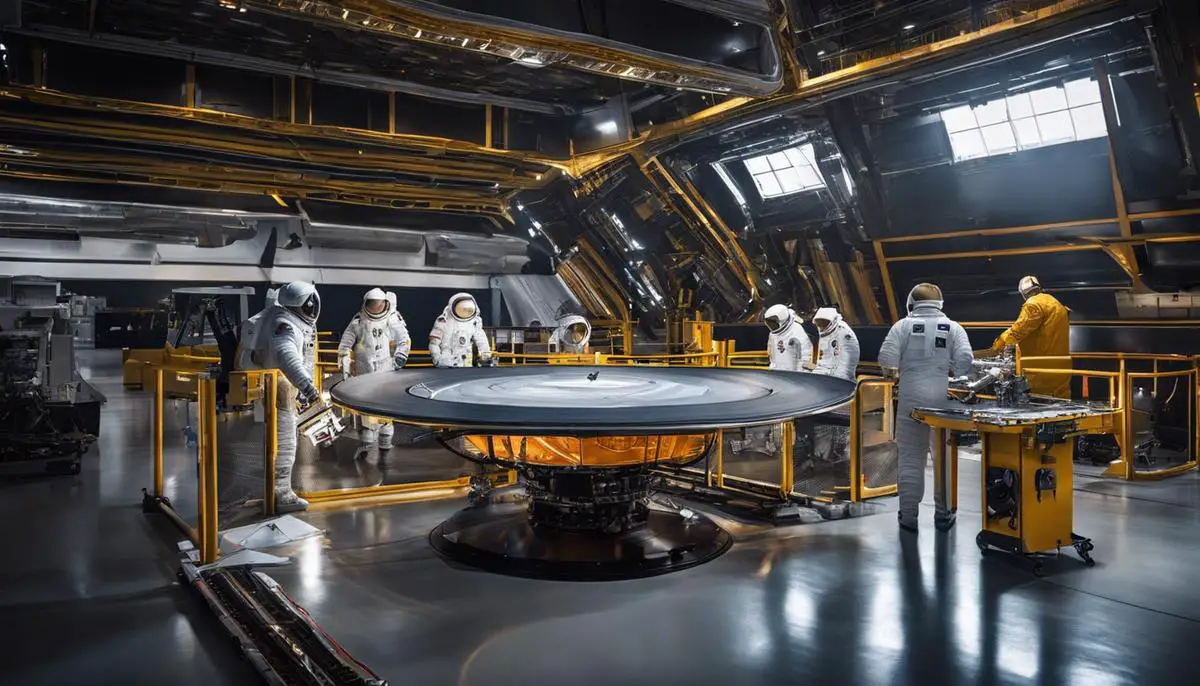In 1967, the Apollo 1 mission tragically marked the beginning of NASA’s lunar voyage, setting a defining moment in the history of space exploration. This tale of determination and bravery unfolded on the launch pad, where the three-man crew prepared to take a leap into the unknown, embodying the fearless spirit of mankind. The intricate task of readying astronauts, constructing a spacecraft, and strategizing a groundbreaking experiment were immense challenges treading on unchartered paths. However, this mission is predominantly yet sadly remembered for the devastating fire during the launch pad test that claimed the lives of its intrepid crew. I intend to shed light upon this tragic yet significant part of space exploration history.
Contents
Preparation and Pre-Launch Activities
The Preparation and Pre-launch Period of Apollo 1: A Meticulous Review
The Apollo 1 mission, despite its tragic ending, marked a significant chapter in the chronicles of space exploration; a page seared into the memory of human achievement that serves as a cornerstone in understanding the complexities, dangers, and triumphs incumbent to space missions. This article delves into the intricate procedures encompassing the preparation and pre-launch stage of Apollo 1, a significant period that is often overshadowed by the catastrophic event it led to.
Initiated by NASA, the Apollo program was a colossal undertaking aimed at the tangible execution of manned moon landings. Apollo 1, initially designated AS-204, was targeted to be the program’s maiden manned mission. The preparation period of Apollo 1, which stretched from 1961 to 1967, was a Herculean endeavor that saw a blend of technological advancements, rigorous astronaut training, intense safety checks and coordination amongst a pool of scientific talents.
The Apollo space vehicle, a masterpiece of the American scientific and technological industry, was composed of three main parts: the command module (CM), the service module (SM) and the huge launch vehicle, namely Saturn IB. The intricate preparation process involved the expert fabrication of these separate modules, and their subsequent vigorous assessment for potential malfunctions. Notably, the pure oxygen environment of the CM, which later played a crucial role in the tragic fire, was diligently tested – a testament to the meticulous care invested in all facets of preparation.
The astronaut crew, namely Gus Grissom, Edward H. White II and Roger B. Chaffee, underwent extensive training in various facets such as spacecraft systems, navigation, geology and survival techniques. These training programs stretched for hundreds of hours, covering a myriad of scenarios and contingencies. Moreover, the team’s regular involvement in the spacecraft development provided them firsthand knowledge of the systems they were to operate and the issues they might encounter.
The eminent role of the simulations or dress rehearsals in the pre-launch process needs to be accentuated. These comprehensive drills were aimed at mimicking the actual launch under controlled conditions, efficiently flagging issues that could be rectified. The unfortunate Plugs-Out Test of Apollo 1, which happened on January 27, 1967, was performed under such a simulated environment, designed to probe the smooth functioning of all systems when the spacecraft was detached from all external power sources. This meticulously planned test was critical in highlighting the problematic aspects of the mission, albeit with disastrous results.
Due importance was also given to the flawless communication coordination between the astronauts and mission control. The pre-launch period was filled with back and forth communication between ground crew and spacefarers, intended to ensure a seamless data exchange during actual flight, enabling the crew to tackle unforeseen circumstances with efficient ground support.
In conclusion, the preparation and pre-launch period of Apollo 1 was marked by intensive planning, relentless training, consistent simulations, and thorough checks, all aimed at the tremendous goal of safely sending humans beyond the confines of their home planet. The unfortunate unfolding of the ill-fated event serves as a stark reminder of the high stakes involved in space missions and forever underscores the necessity for unflagged vigilance and unfailing safety measures.
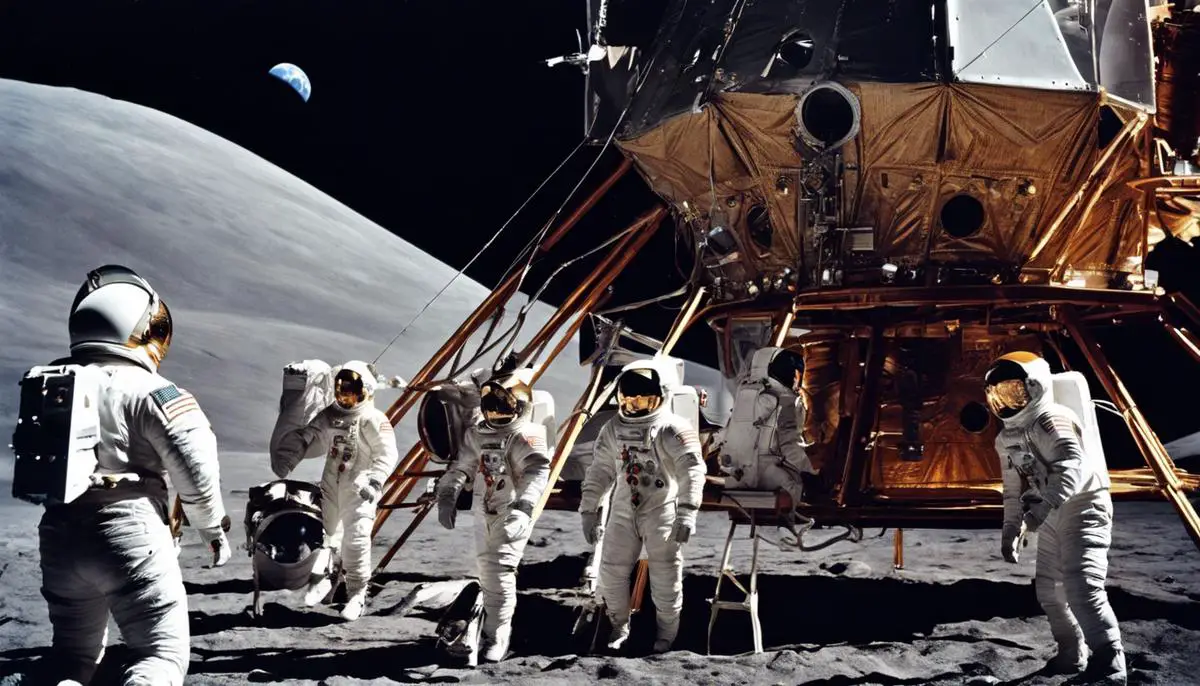
The Launch Pad Test and the Fire Incident
Heading: The Catastrophic Fire during the Apollo 1 Mission Test: Causes and Consequences
The fatal fire that claimed the lives of three astronauts during a launch pad test of the Apollo 1 spacecraft is a monumentally pivotal moment in space exploration history. The NASA investigation identified multiple causative factors leading to this horrific incident.
The culmination of the unfortunate factors started with pure oxygen coursing through the inner capsule in excess pressures. This environment was highly inflammable and potentially fatal in the event of an ignition. The test kickstarted with the hatch bolted tightly from the outside, essentially trapping the astronauts inside. These design elements were an unfortunate oversight in safety measures.
On January 27, 1967, while conducting a “plugs-out” test, which involved detaching the spacecraft from all power sources except its internal batteries, a disaster struck. An arcing wire, possibly as a result of damaged insulation, is speculated to have ignited a fire. Within seconds, the pure oxygen atmosphere fueled the fire to dangerous proportions, raising temperatures to the point where the internal cabin materials combusted. The release of toxic gases and intense heat took the lives of astronauts Virgil ‘Gus’ Grissom, Edward White and Roger Chaffee.
The report highlighted a variety of influencing factors for this tragedy including the use of pure oxygen prelaunch environment, the interior design of the spacecraft, the mix of flammable materials used, and the hefty outward-opening hatch that would have taken at least 90 seconds to open.
Looking at the broader ramifications of this incident, needless to say, this mishap led to a comprehensive revision of spacecraft design principles. The heartbreaking loss compelled NASA to inculcate diligent practices concentrating on crew safety to ensure no such recurrence in future missions. The door design was swiftly altered, enabling it to open inward while also ensuring the construction materials used were as noncombustible and non-toxic as possible. Additionally, the practice of using a pure oxygen atmosphere at launch was also phased out and replaced with a safer mix of oxygen and nitrogen for pre-launch and low orbital activities.
The catastrophic Apollo 1 fire prompted a massive 20-month overhaul of the Apollo program that significantly pushed back NASA’s lunar ambitions but fundamentally reshaped the course of human spaceflight. The lessons from the tragedy reverberate even today; they serve as a stark reminder that space exploration, while promising glory and progress to mankind, also demands sacrifice and uncompromising diligence in the face of peril.
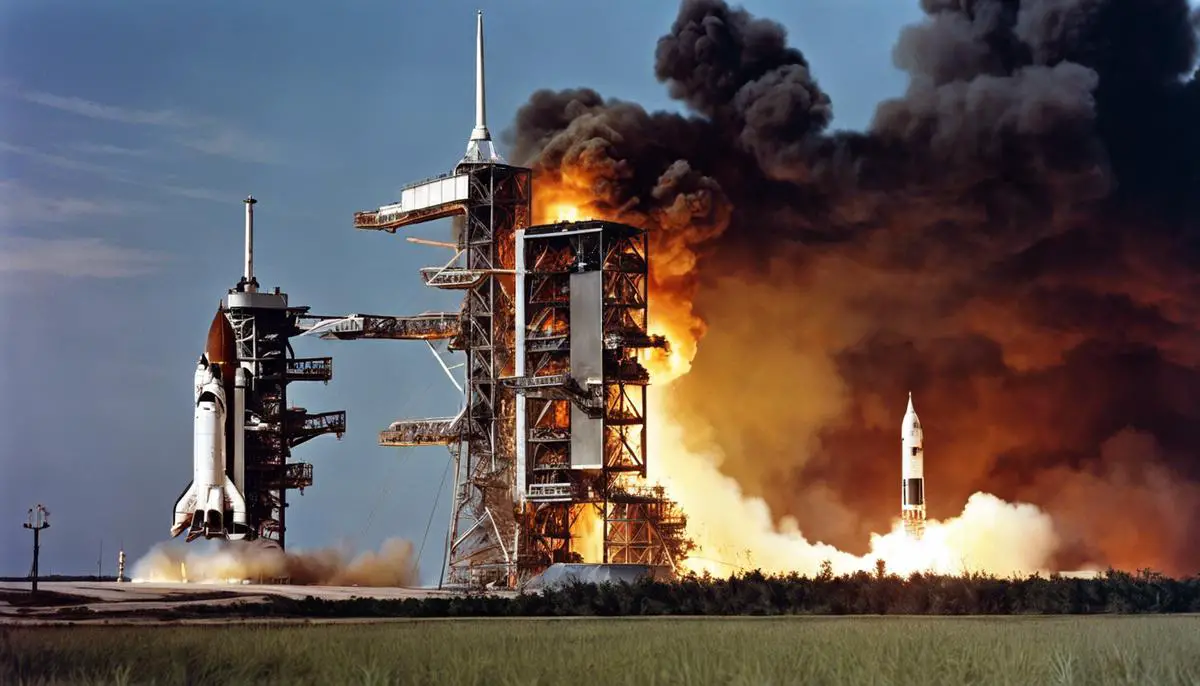
Post-Apollo 1 Investigations and Changes in Policy
Subsequent to the Apollo 1 disaster that took place on January 27, 1967, a meticulous and comprehensive investigation was conducted by NASA’s review board to reveal the conditions that culminated in the tragic loss of three astronauts: Gus Grissom, Ed White, and Roger B. Chaffee. This calamitous incident incensed extensive policy changes and strategic modifications in NASA’s approach towards safety mechanisms, spacecraft design and testing procedures.
The investigation report, released in April 1967, depicted an array of factors contributing towards the disastrous incident. Noteworthy amongst these was the utilization of highly flammable materials within the spacecraft, which when combined with a pure-oxygen environment, immensely accelerated the fatal fire. The report lambasted the design oversight of the complex hatch system which opened outwards and was bolted from the outside, delaying the escape process during the emergency. Furthermore, a scathing observation on inadequate emergency preparedness and ineffective safety measures was also enlisted in the report; underscoring a humbling reminder of the immense risk involved in space expeditions.
Upon the arrival of somber conclusions from the investigation, the Apollo program underwent a drastic overhaul for a 20-month period; the longest hiatus in its history. It was a period committed to rectifying design lapses, augmenting flight safety measures and reinforcing communication protocols. The pure oxygen environment in the Command Module was one of the first to be replaced with a mix of oxygen and nitrogen making it less susceptible to combustion. The spacecraft’s hatch design was revised to open inwards, reducing escape time in emergencies. Additionally, the use of combustible materials in the construction of the inhabitants’ cabin was minimized, providing a safer environment for astronauts.
Post-incident, NASA enhanced its attention towards regular safety inspections and intensified pre-launch tests including a thorough ‘plugs-out’ test; facilitating identification of potential flaws and allowing time for remediation. Safety management was given an absolute precedence with the unanimous agreement that mission success could not come at the cost of crew safety.
The lamentable catastrophe of Apollo 1 drove NASA and the collective field of space exploration to a critical juncture, altering the trajectory of future missions. The strategies and reformations adapted post the Apollo 1 incident assisted in the mitigation of risk, enhancement of safety measures, and re-evaluation of mission protocols. As tragic as the Apollo 1 incident remains, the lessons learned have led to design, procedure, and policy improvements that have helped ensure the safety of astronauts in all future expeditions. The ordeal predominantly emphasized the unceasing pursuit of knowledge and the scientific quest, albeit the high stakes, and underpinning every accomplishment in space exploration.
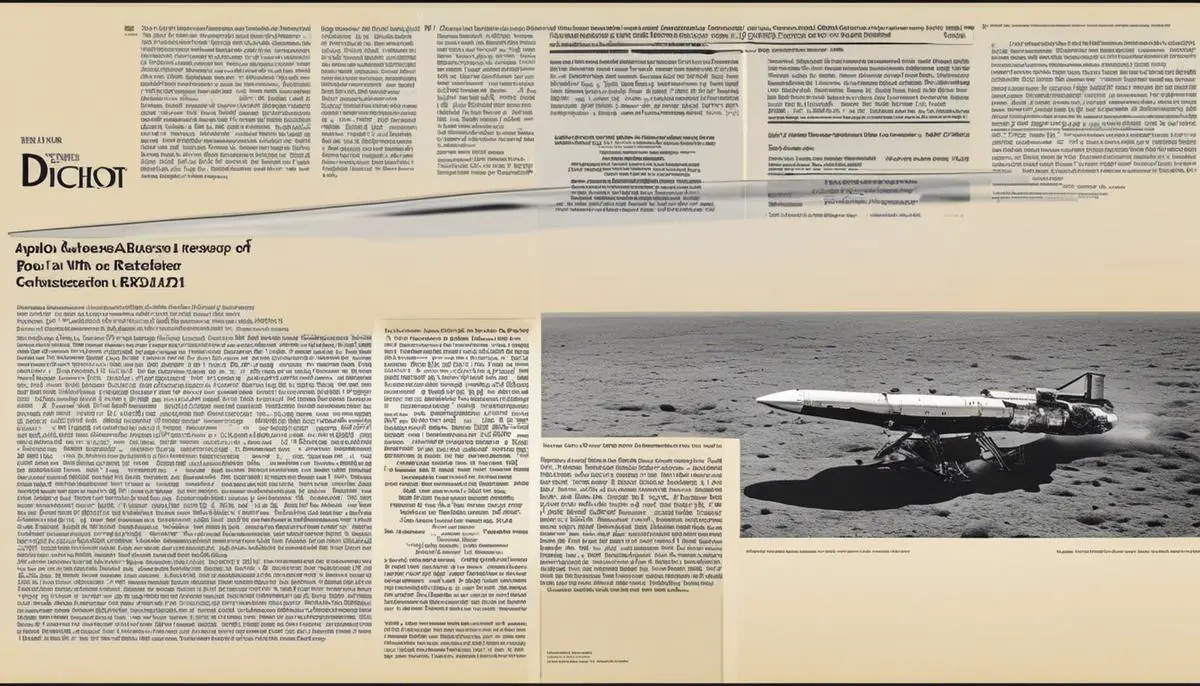
Legacy of Apollo 1
The Apollo 1 disaster was a cataclysmically defining moment in the odyssey of space exploration. It was as if the collective conscience of human space exploration had turned a momentous corner – from a place of visionary dreams and bold ambition to a reality check upon the ruthless matrix of risks. It was no longer about venturing into new frontiers but about acknowledging sobering lessons, renovating strategies, and inaugurating greater diligence towards safety.
The calamity led to a paradigm shift in how NASA approached safety. As articulated in the incident’s investigation report, the process of understanding risk shifted from abstract probabilities to tangible perspectives. Every worst-case scenario now held a kernel of potent reality and every safety measure gained a new sanctity. In essence, the Apollo 1 disaster initiated a more rigorous safety culture in NASA that reverberates through the annals of astronautical engineering today.
The ensuing revisions in spacecraft designs were no minor adjustments, but significant transformations. Subsequent Apollo vehicles were mandated to contain advanced firefighting equipment. Flammable materials used in the manufacturing process were soon phased out, replaced with self-extinguishing and non-metallizing materials. Simultaneously, NASA’s scrutiny on suppliers intensified, the fate of the mission was no longer an abstract objective, it acquired the faces of the brave astronauts within these vehicles; quality control therefore, had to be infallible.
One of the most crucial changes to surface in the aftermath of the disaster was the revision of the hatch design. The Apollo 1 investigation pointed out the critical loss of time that an outward-opening hatch caused. The repercussions were heeded, and the following Apollo missions adopted a quick-release, inward-opening hatch. This update proved its merit in 1970 during the Apollo 13 mission, directly contributing to the successful return of the astronauts aboard the ship.
As the story of Apollo progressed, the specter of Apollo 1 took the form of an ever-present observer, ensuring astronaut safety was above all else. Pre-launch tests evolved from mere procedural tasks to meticulous operations with reinforced checks and improved communication. Safety inspections now held a higher order of command, reducing chances of oversight or errors.
However, it was not just NASA that drew lessons from the Apollo 1 disaster. The echo of this accident traversed across borders, influencing international space agencies and programs. The significance of meticulous design reviews, exhaustive safety measures, and critical training programs took on a new, globally-understood importance. In essence, the Apollo 1 disaster shaped a future in space exploration dominated by an unwavering commitment to safety, thorough checks, and drills.
In conclusion, while the price paid was severe, the legacy of the Apollo 1 disaster extended beyond its individual catastrophe. It formed the foundation of a resilient culture of safety, meticulousness, and constant learning. The phoenix that rose from the Apollo 1’s ashes symbolizes the enduring pursuit of knowledge against all odds, a testament to human resilience and courage to explore the unknown. It is a reminder of imperfections and the constant striving that is needed to reach our loftiest goals. It is through this creed that we continuously redefine the boundaries of space exploration.
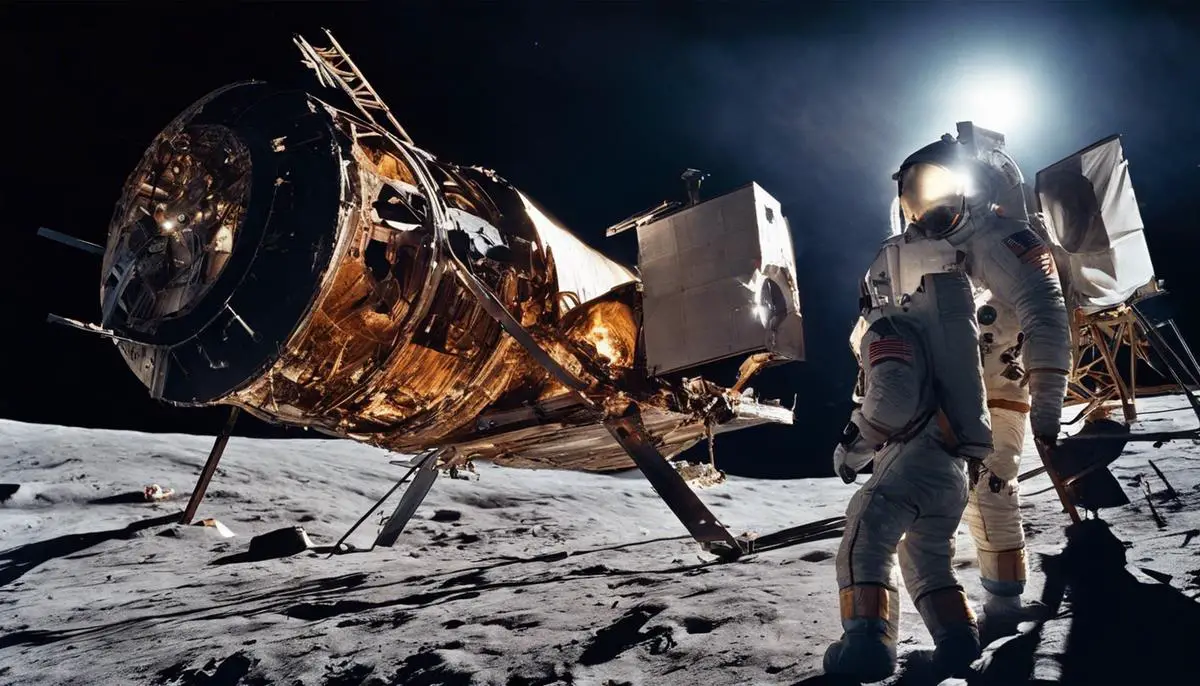
Through the ashes of the Apollo 1 lies the quintessential lesson that triumph often trailblazes through trials, and this tragedy played a significant role in shaping the success of future Apollo missions. The immediate repercussions triggered changes that significantly improved spacecraft safety, leading to notable design modifications and stricter protocols. Ultimately, the legacy of this unfortunate incident echoes through the annals of space exploration, reminding us of the invaluable lessons learned, the technological advancements made, and the heroism of those who risk everything in the name of discovery. Undeniably, the Apollo 1 mission, while tragic, has ultimately given rise to a safer, more enlightened era of space exploration.
